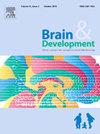早期低血糖并不是适合孕龄< 32周早产儿2岁神经发育障碍的独立危险因素
IF 1.3
4区 医学
Q4 CLINICAL NEUROLOGY
引用次数: 0
摘要
目的评价胎龄≤32+0/7周/天的适胎龄(AGA)早产儿2岁神经发育障碍的独立危险因素是否为生命前6小时低血糖(HOL)。方法回顾性分析598例AGA早产儿(GA: 24+0/7 ~ 31+6/7周/天)的资料。在前6个HOL内至少有一次低血糖发作的婴儿(血糖浓度低于40 mg/dL;与无低血糖的婴儿(Glyc≥40[Birth-6HOL])进行比较。采用倾向评分匹配分析进行比较。Logistic回归分析用于评估Glyc<;40[出生- 6hol]与2年认知(COG)和运动(MOT)障碍(定义为Bayley-III评分<;85.结果598例AGA早产儿中,Glyc≥40[Birth-6HOL]者129例(21.6%),Glyc≥40[Birth-6HOL]者469例(78.4%)。Glyc≥40[birth - 6hol]和Glyc≥40[birth - 6hol]从出生到静脉输注葡萄糖的时间无显著差异。经多次调整,与Glyc≥40[Birth-6HOL]的婴儿相比,Glyc≥40[Birth-6HOL]的婴儿2年COG (ExpB: 1.150, p = 0.656)和MOT (ExpB: 0.982, p = 0.834)损害的风险均未显著增加。79对配对婴儿的2年神经发育评分没有差异。结论在严格血糖监测和标准化血糖管理的临床环境中,早期低血糖(≤6hol)未被确定为GA在24+0/7 ~ 31+6/7周/天之间的AGA早产儿2年COG和MOT损害的独立危险因素。本文章由计算机程序翻译,如有差异,请以英文原文为准。
Early hypoglycemia is not an independent risk factor for 2-year neurodevelopmental impairment in appropriate-for-gestational age preterm infants < 32 weeks
Objective
To evaluate whether hypoglycemia within the first 6 h of life (HOL) is an independent risk factor for 2-year neurodevelopmental impairment in appropriate-for-gestational age (AGA) preterm infants with a gestational age (GA) <32+0/7 weeks/days.
Methods
We retrospectively analyzed data of 598 AGA preterm infants (GA: 24+0/7–31+6/7 weeks/days). Infants with at least one episode of hypoglycemia within the first 6 HOL (blood glucose concentration below 40 mg/dL; Glyc<40[Birth-6HOL]) were compared with infants without any hypoglycemia (Glyc≥40[Birth-6HOL]). Propensity score matching analysis was conducted for comparisons. Logistic regression analyses were used to evaluate the association of Glyc<40[Birth-6HOL] with 2-year cognitive (COG) and motor (MOT) impairments defined as a Bayley-III score < 85.
Results
Of the 598 AGA preterm infants, 129 (21.6 %) were classified as Glyc<40[Birth-6HOL], and 469 (78.4 %) as Glyc≥40[Birth-6HOL]. Time from birth to intravenous glucose infusion did not significantly differ between Glyc<40[Birth-6HOL] and Glyc≥40[Birth-6HOL]. After multiple adjustments, Glyc<40[Birth-6HOL] infants did not have a significantly higher risk of both 2-year COG (ExpB: 1.150, p = 0.656) and MOT (ExpB: 0.982, p = 0.834) impairment compared to Glyc≥40[Birth-6HOL]. No differences in 2-year neurodevelopmental scores were found between the 79 matched infant pairs.
Conclusion
In a clinical setting with strict glycemic monitoring and standardized glucose management, early hypoglycemia (≤6 HOL) was not identified as an independent risk factor for 2-year COG and MOT impairment in AGA preterm infants with a GA between 24+0/7 and 31+6/7 weeks/days.
求助全文
通过发布文献求助,成功后即可免费获取论文全文。
去求助
来源期刊

Brain & Development
医学-临床神经学
CiteScore
3.60
自引率
0.00%
发文量
153
审稿时长
50 days
期刊介绍:
Brain and Development (ISSN 0387-7604) is the Official Journal of the Japanese Society of Child Neurology, and is aimed to promote clinical child neurology and developmental neuroscience.
The journal is devoted to publishing Review Articles, Full Length Original Papers, Case Reports and Letters to the Editor in the field of Child Neurology and related sciences. Proceedings of meetings, and professional announcements will be published at the Editor''s discretion. Letters concerning articles published in Brain and Development and other relevant issues are also welcome.
 求助内容:
求助内容: 应助结果提醒方式:
应助结果提醒方式:


